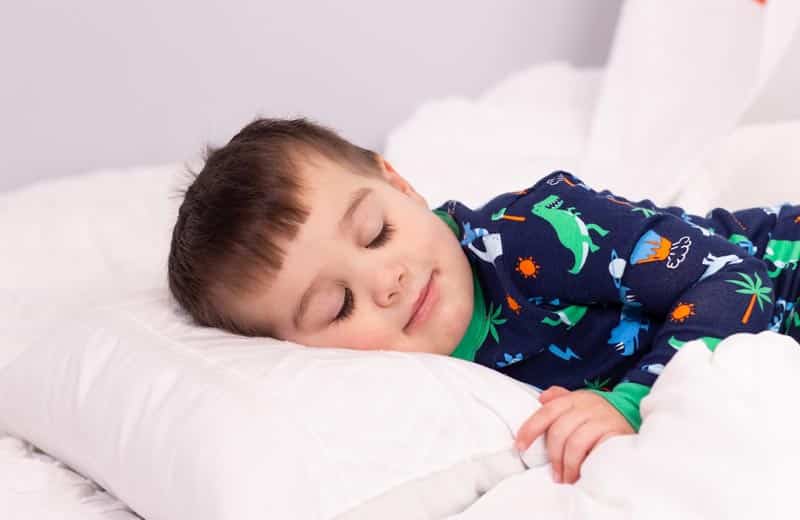
When a new baby is on the way, expectant parents often invest substantial energy in preparing the nursery. They agonize over the perfect color scheme, choose a decorative theme, carefully select furniture, and pay attention to even the smallest details to lovingly create a happy space for their little one.
You can extend that same effort to your own space by designing a bedroom filled with elements that bring you joy and serenity.
Choose a Dreamy Color Palette
First choose a soothing color that promotes relaxation. Blues, greens and neutrals are popular palettes that create a calming effect. Select a style or theme that evokes pleasure. Maybe you love the beach or took a trip to Spain, where you made happy memories. Go ahead and incorporate your interests and personal preferences.
The Mattress Matters
The most important piece of furniture in the nursery is the crib. Babies need a safe and comfortable sleeping surface to rest their sweet heads, so parents choose carefully. As adults, the bed should be the centerpiece of our bedroom too. We accumulate aches and pains as we age, which cause interruptions in our sleep. A comfortable mattress is an important investment. Do your homework and test out the options. Remember the children’s fairy tale of The Princess and the Pea? Don’t be afraid to be picky. After all, you will be spending roughly one-third of every day in bed. It should be perfectly suited to your individual needs.
Lights Out
One detail most parents quickly learn the importance of in their child’s sleeping environment is light exposure. Children’s eyes have larger pupils and clearer lenses, meaning they are more sensitive to light. When your toddler’s wake-up call comes earlier and earlier with the sunrise, or bedtimes on long summer days become a battle, it’s time to invest in some darker window treatments or blackout shades. Adults are sensitive to light, too, and lighting is an often overlooked detail that can make a big difference. Soft lighting with bulbs that filter out blue light help the brain detect the onset of night and signal the secretion of melatonin. This natural hormone tells our body it’s time to sleep. When sleepytime arrives, darkness is best, so go maximum batcave and block out as much light as possible.
Keep it Cool
New parents get more than their fair share of unwanted advice, including the popular refrain of the baby not being warm or cool enough. Dads and moms often hear, “put a onesie on that baby,” or “why isn’t that baby wearing socks?” Parents might be left guessing a baby’s ideal temperature level, but your own is easier to manage. Choose bedding that allows you to regulate your body temperature, and layer it for easier adjustments. A cool temperature is best for sleep, somewhere between 60 and 67 degrees Fahrenheit. Fabrics that feel good against your skin can make bedtime seem like a trip to the spa.
Routine Is Key
A bedtime routine is key to guiding children to dreamland. We forget as adults that routine continues to play an important role in our sleep quality. Allow adequate wind-down time, including some time for a mental pause to reflect on the current demands of life. Addressing worries before going to bed will help prevent the bad habit of bedtime becoming a time when we turn off the lights and turn on racing thoughts in our minds. A grown-up bedtime routine should be simple and unstimulating, and should include whatever activities you find relaxing. Popular choices are reading, yoga, a hot bath and music. It’s smart to set a curfew for your devices an hour or so before bedtime. The content is often stimulating, and the blue light can trick your brain into thinking it’s still daytime.
If you miss childhood days when sleep was sweet, deep and carefree – don’t despair. Instead, create a sleeping space where you feel happy and relaxed. Set up your environment to maximize your comfort. Then prepare your mind and body with a consistent routine. Before you know it, you’ll be sailing off to the Land of Nod.
Increasing your odds of childlike slumber is as simple as ABC. Learn how to #SleepLikeAKid with the help of experts at @BetterSleepOrg. #BetterSleepMonthAbout Ellen Wermter
Ellen Wermter is a board-certified family nurse practitioner through the American Nurses Credentialing Center and a member of Sigma Theta Tau National Honor Society. She earned her Bachelor of Science in Nursing at the University of Virginia and her Master of Science at Virginia Commonwealth University and is a member of the Virginia Council of Nurse Practitioners (VCNP). Ellen is a dedicated sleep professional certified in cognitive behavioral therapy for insomnia who actively treats patients full time. In addition to her clinical work, she is a regular contributor to media about the science of sleep and healthy rest. Her expertise has been featured in publications such as Reader’s Digest, Elite Daily, Offspring and Women’s Running.
This blog provides general information about sleep and sleep products. The words and other content provided in this blog, and in any linked materials, are not intended to replace a one-on-one relationship with a qualified heath care professional. This blog should not be construed as medical advice or used to diagnose, treat, prevent or cure any disease or condition. If the reader or any other person has a medical concern, he or she should consult with an appropriately-licensed physician or other health care professional. This blog is not a substitute for professional medical advice, diagnosis or treatment, and should not be relied upon to make decisions about your health or the health of others. Never disregard professional medical advice or delay in seeking it because of something you have read on this blog or elsewhere on bettersleep.org. If you think you may have a medical emergency, immediately call your doctor or dial 911.



